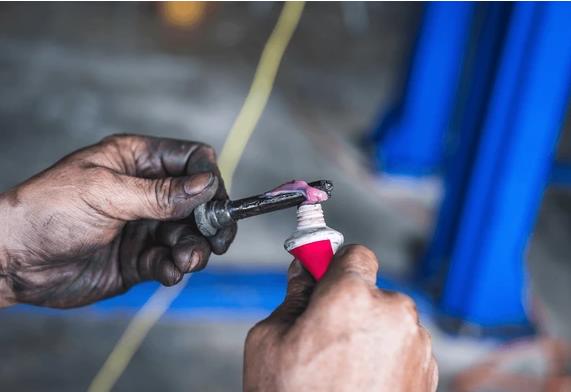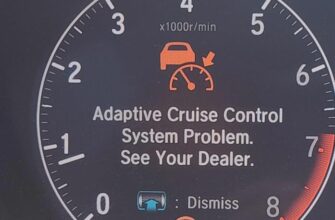You’re knee-deep in a brake job, pads and rotors are looking good, and now it’s time for that crucial, often-skipped step: lubricating the caliper pins (also called guide pins or slider pins). You reach for a tub of grease, see “Brake Grease” on the label, and think, “Great, I can use this on the pins, right?”
Well, hold on a second! While the label says “Brake Grease,” not all brake greases are created equal, and using the wrong type on your caliper pins can cause more harm than good. Let’s clear up the confusion and make sure you’re using the right stuff for smooth, reliable braking.

Understanding Caliper Pins and Why They Need Lubrication
So, what exactly are caliper pins, and why are they so important?
The Caliper’s Sliding Role
Most cars today use “floating” or “sliding” calipers. When you hit the brakes, the piston on one side pushes the inner brake pad against the rotor. The entire caliper assembly then needs to slide smoothly on its pins to bring the outer pad into contact with the rotor as well.
Guiding the Way to Even Braking
Caliper pins are essentially the guide rods that allow this sliding motion to happen freely. Think of them like the rails on a sliding door – if the rails are dirty or sticky, the door won’t move smoothly. If caliper pins aren’t properly lubricated, the caliper can bind up.
Why Lubrication is CRUCIAL
Proper lubrication ensures the caliper slides effortlessly. This is key for:
- Even Brake Pad Wear: A binding caliper wears pads unevenly.
- Preventing Noise: Sticking calipers can cause squealing or grinding.
- Consistent Braking Force: Ensures both pads apply even pressure to the rotor.
- Preventing Seizing: Stops the pins from corroding and getting stuck.
Why Specific Brake Lubricants Are Essential
The environment inside your wheel is pretty nasty – extreme heat from braking, freezing cold, constant exposure to water, dirt, road salt, and grime. Plus, caliper pins have delicate rubber boots that seal them from the elements.
Not All Greases Are Created Equal
Standard greases (like chassis grease or general-purpose lithium grease) are NOT designed for these conditions. They can break down under high heat, wash away with water, or worse, damage those vital rubber boots.
The Harsh Environment of Brake Systems
Brake temperatures can easily reach hundreds of degrees Fahrenheit during heavy braking. Water and contaminants are constantly present. Any lubricant used here needs to withstand this abuse and keep doing its job.
Compatibility with Rubber is KEY!
This is perhaps the most critical factor for caliper pins. The rubber boots protect the pins from corrosion. Petroleum-based greases will cause these rubber boots to swell, soften, and eventually fail. Once the boot is compromised, water and dirt get in, and the pin will seize solid. Game over for smooth sliding!
Can You Use Just Any “Brake Grease” on Caliper Pins?
Okay, back to the original question. If a grease is labeled “Brake Grease,” is it safe for the pins?
The answer is NO, not necessarily.
Some products labeled “Brake Grease” are intended only for metal-to-metal contact points like the back of brake pads or shims to prevent noise. They might not have the necessary properties for high-temperature, rubber-contact applications like caliper pins.
The Right Kind: High-Temp, Synthetic, Rubber-Compatible
For caliper pins, you need a high-temperature, water-resistant, synthetic lubricant specifically formulated to be compatible with rubber and plastic. Look for terms on the packaging like:
- “Synthetic Brake Caliper Lubricant”
- “Caliper Pin Lube”
- “High-Temperature Silicone Paste”
- “Dielectric Silicone Grease” (often suitable, but check temp rating)
“Learned this the hard way years ago. Used some random brake grease on my pins during a pad change, and a few months later, one side was squealing and wearing funny. Pulled it apart, and the rubber boots were swollen up like balloons! Had to replace the pins and boots and use the correct silicone lube. Never again!” – Mark B., DIY Mechanic
The Right Types of Grease for Caliper Pins
So, what should you actually use?
Silicone-Based Brake Lubricant
This is a top recommendation. Silicone grease is excellent because it’s very rubber and plastic friendly, has a wide temperature range, and resists washing away.
Synthetic Grease with Ceramic or PTFE
Some high-quality synthetic brake lubricants contain ceramic or PTFE (Teflon) solids. These are also good choices for caliper pins as they offer high-temperature resistance and lubrication properties suitable for this application.
AVOID Petroleum-Based Greases!
Seriously, avoid them like the plague for caliper pins. This includes standard lithium grease, chassis grease, or any grease that doesn’t explicitly state it is rubber-compatible and suitable for caliper pins. They will damage the rubber boots.
Consequences of Using the Wrong Grease (Or No Grease!)
Using the wrong lubricant or skipping lubrication entirely is a recipe for brake problems.
Caliper Binding is the Big One
If pins aren’t lubricated or the lube breaks down, the caliper can’t slide correctly. It gets stuck or “binds.”
- Results: Uneven brake pad wear (one pad wears much faster), the car pulling to one side when braking, reduced braking efficiency, and overheating of the brake components on the binding side.
- It’s like trying to drag a heavy box instead of sliding it smoothly – hard work and inefficient!
Squealing or Grinding Noises
Lack of lubrication is a common cause of irritating brake noise.
Damaged Rubber Boots
As mentioned, petroleum-based greases or simply cracked/torn boots allow water and dirt in, leading to rapid corrosion of the pins.
Reduced Braking Performance
A binding caliper means your brakes aren’t working as designed, compromising your ability to stop safely.
Step-by-Step: Lubricating Caliper Pins Correctly (Brief Overview)
Properly lubricating your caliper pins is part of a good brake job. Here’s a quick look at the process:
Safety First!
Always work on a flat, stable surface. Use a quality jack and secure the vehicle on jack stands. Never rely on just a jack. Use wheel chocks.
Remove Caliper
Follow the service manual for your specific vehicle to detach the brake caliper from its mounting bracket. You’ll usually remove two bolts that thread into the caliper pins or sleeves. Support the caliper – don’t let it hang by the brake hose.
Clean Pins & Bores
Remove the caliper pins. Thoroughly clean the old grease and grime off the pins and out of the bores (the holes in the caliper bracket where the pins slide). A wire brush and brake cleaner work well.
Inspect Pins & Boots
Check the pins for corrosion or pitting. Inspect the rubber boots for tears, cracks, or swelling. Replace any damaged boots or corroded pins. This step is vital!
Apply the Correct Lubricant
Apply a thin, even coat of your high-temperature, rubber-compatible synthetic brake lubricant to the entire surface of the clean caliper pins. Also, apply a thin coat inside the pin bores in the caliper bracket.
- Pro-Tip: Don’t pack the rubber boot full of grease; it can create a hydraulic lock preventing the pin from sliding properly. Just a thin coat on the pin and inside the bore is sufficient.
Reassemble
Insert the lubricated pins back into the bores. Reinstall the caliper onto the mounting bracket, ensuring the pins slide smoothly before tightening the bolts to specification (use a torque wrench!).
“It’s amazing the difference the right lube makes. My brakes were always a bit noisy after a few months. Switched to a good quality silicone paste on the pins, and they stay quiet and smooth way longer.” – Sarah W., Happy DIYer
Working on your brakes is a critical maintenance task. For other DIY car care tips, check out these related guides:
- How to Fix the P0171 Lean Code on Your Vehicle
- Diagnosing and Fixing the P0420 Catalytic Converter Efficiency Code
- Temporary Fix for Overheating Car: Keep Car from Boiling Over
Frequently Asked Questions (FAQ)
Q: Can I use regular chassis grease on caliper pins?
A: No, absolutely not. Regular chassis grease is usually petroleum-based, which will damage the rubber boots on the caliper pins. It also typically cannot withstand the high temperatures generated by your brakes.
Q: How often should I lubricate caliper pins?
A: Caliper pins should ideally be cleaned and re-lubricated every time you do a brake job (when replacing pads and/or rotors). It’s also a good idea to check and re-lube them during routine vehicle inspections, especially if you live in an area with road salt or significant moisture.
Q: How much grease should I use on the pins?
A: You only need a thin, even coat covering the surface of the pin and lightly inside the bore. Do not pack the rubber boot full of grease, as this can create pressure that prevents the pin from sliding freely.
Q: What happens if the rubber boot on the caliper pin is torn?
A: If a rubber boot is torn, it must be replaced immediately. A torn boot allows water, dirt, and salt to enter the pin bore, leading to corrosion and seizing of the caliper pin. Simply adding more grease won’t help; the pin needs to be cleaned (or replaced if corroded) and a new boot installed to seal the system.
Q: My new brake pads came with a small packet of grease. Is that for the pins?
A: Read the packet! Often, the small packets included with brake pads are for lubricating the back of the pads or pad shims, not the caliper pins. Always check the instructions and verify the type of grease is suitable for rubber and high temperatures before using it on pins.
Conclusion
When it comes to brake caliper pins, using the right lubricant isn’t just a recommendation – it’s essential for safe and effective braking. Always reach for a high-temperature, synthetic grease specifically designed for caliper pins and rubber compatibility. Taking the extra few minutes to properly clean and lubricate these crucial components during your brake maintenance will ensure your calipers slide smoothly, your pads wear evenly, and your brakes perform reliably when you need them most. Don’t let using the wrong grease turn a simple brake job into a future headache!








